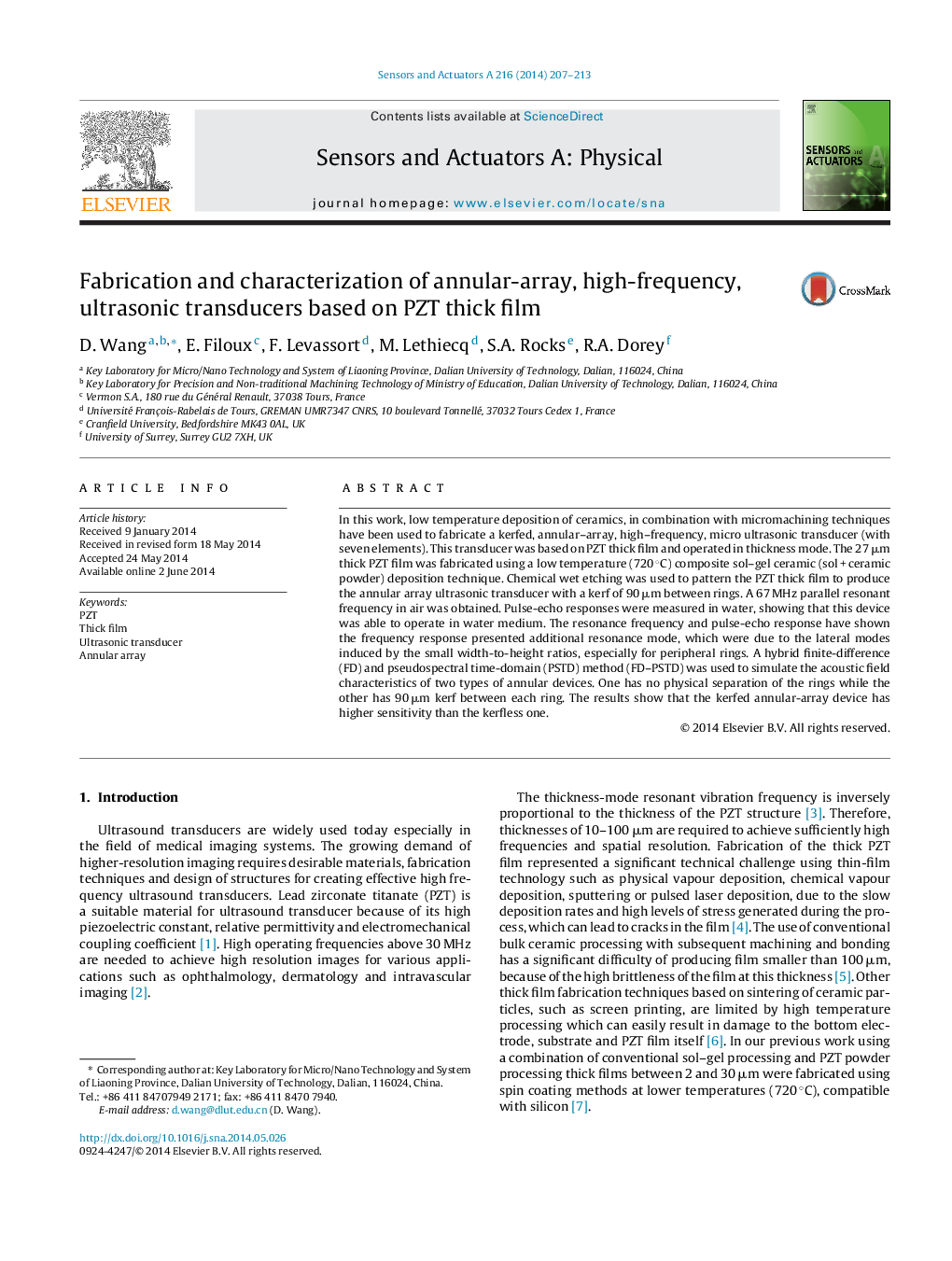| Article ID | Journal | Published Year | Pages | File Type |
|---|---|---|---|---|
| 737021 | Sensors and Actuators A: Physical | 2014 | 7 Pages |
•A kerfed, annular-array, high-frequency, micro ultrasonic transducer was produced.•Low temperature deposition and MEMS techniques were used to produce the UT.•The annular UT had a 67 MHz resonance frequency in air and can work in water.•A FD–PSTD method was used to simulate the annular-array UT.
In this work, low temperature deposition of ceramics, in combination with micromachining techniques have been used to fabricate a kerfed, annular–array, high–frequency, micro ultrasonic transducer (with seven elements). This transducer was based on PZT thick film and operated in thickness mode. The 27 μm thick PZT film was fabricated using a low temperature (720 °C) composite sol–gel ceramic (sol + ceramic powder) deposition technique. Chemical wet etching was used to pattern the PZT thick film to produce the annular array ultrasonic transducer with a kerf of 90 μm between rings. A 67 MHz parallel resonant frequency in air was obtained. Pulse-echo responses were measured in water, showing that this device was able to operate in water medium. The resonance frequency and pulse-echo response have shown the frequency response presented additional resonance mode, which were due to the lateral modes induced by the small width-to-height ratios, especially for peripheral rings. A hybrid finite-difference (FD) and pseudospectral time-domain (PSTD) method (FD–PSTD) was used to simulate the acoustic field characteristics of two types of annular devices. One has no physical separation of the rings while the other has 90 μm kerf between each ring. The results show that the kerfed annular-array device has higher sensitivity than the kerfless one.
